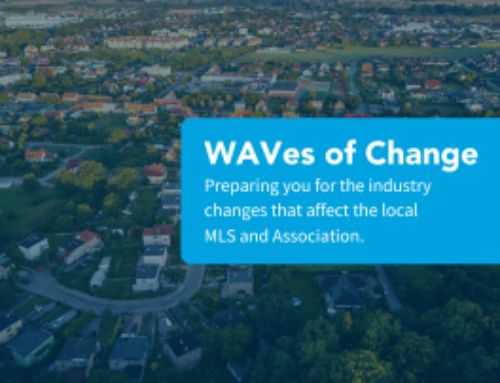 One announcement that was made around the Council of MLS meetings was the intention of the California Regional Association of REALTORS to offer the Paragon MLS system alongside the CoreLogic Matrix system. This was a big topic of conversation in our recent webinar, the most recent installment in our ongoing WAVes of Change series. Just think about it – they will be running in parallel forever.
One announcement that was made around the Council of MLS meetings was the intention of the California Regional Association of REALTORS to offer the Paragon MLS system alongside the CoreLogic Matrix system. This was a big topic of conversation in our recent webinar, the most recent installment in our ongoing WAVes of Change series. Just think about it – they will be running in parallel forever.
History
CRMLS is a complex MLS. They support 78,000 subscribers and they plan to grow. California has a lot of Paragon installations in California, including some large MLSs like San Diego County and a more modest sized MLS in the Eastern Bay of San Francisco. There are much smaller accounts scattered around the state. San Diego is a neighbor to CRMLS and they share overlapping membership in Northern San Diego County.
Strategy
From a strategic perspective, the size of CRMLS is justification enough to offer different systems. We have witnessed this before in Chicago where they offered three systems years ago, and in the Dallas and greater northern Texas market where CoreLogic’s Innovia system was offered because of its support for mobile web and Mac OS. Front end of choice has been around. In Chicago the thought was that one system would rise above the other. That did not happen. Agents will not change systems unless they are forced to.
For CRMLS, front-end system of choice provides their subscribers with variation. Different systems appeal to different audiences. Offering system variety is also not foreign to the company. When CRMLS was formed, they offered Discover MLS, MLXchange, and Tempo. In many ways, I think that CRMLS drew success from system flexibility and this may be an effort to return to those roots. Rapattoni, another heavily adopted system among California MLSs, has recently shared that they are not opposed to operating their application as a front end of choice.
Complexity
One of key complexities of the construct is getting the vendors to work together in a way that does not require CRMLS members to pay for two systems. WAV Group’s understanding is that payments are only the active users on each system – not a site license, will pay vendors. The means for calculating users is not public at this time. I think this will create some healthy competition among the vendors to deliver excellence and innovation.
The Single Sign On to supporting applications to each system will need to be configured. For example, SSO service to applications like Realist or Cloud CMA will need to be supported through both.
Separating the database from the application is a cornerstone of this endeavor. They have long hosted their data this way at CRMLS. Other large MLSs have adopted this schema too. It is the thesis that is also the current pursuit of the National Association of REALTORS with their Advanced Multi-List (AMP) platform that is currently under development. Today, most small to midsized MLSs shove their data into the Vendor’s data format during a conversion. Under this schema, the vendor will map their application to the MLSs data. It is a much better construction schema.
If you have ever done a conversion or ran in parallel before, you know that listing management is typically relegated to one system or the other unless you use a separate listing manager like Bridge Interactive or Keystone from MRIS. That is not what they are doing at CRMLS. They are using the native listing manager in each system and leveraging APIs on the backend to publish to the database. Clever!
About WAVes of Change
The WAVes of Change series is a quarterly online meeting hosted by the WAV Group. The aim is to keep MLS Boards up to speed on the fast moving change in our industry to better prepare organizations to make well-informed decisions. WAVes of Change is a very affordable subscription service. Please contact Marilyn@WAVGroup.com if you believe that your board would benefit from staying connected. We are currently accepting applications for the next meeting, which is scheduled for December. It will include an NAR wrap up and an outlook for changes that are expected in the first quarter of 2016. Time flies when your industry is having fun!




